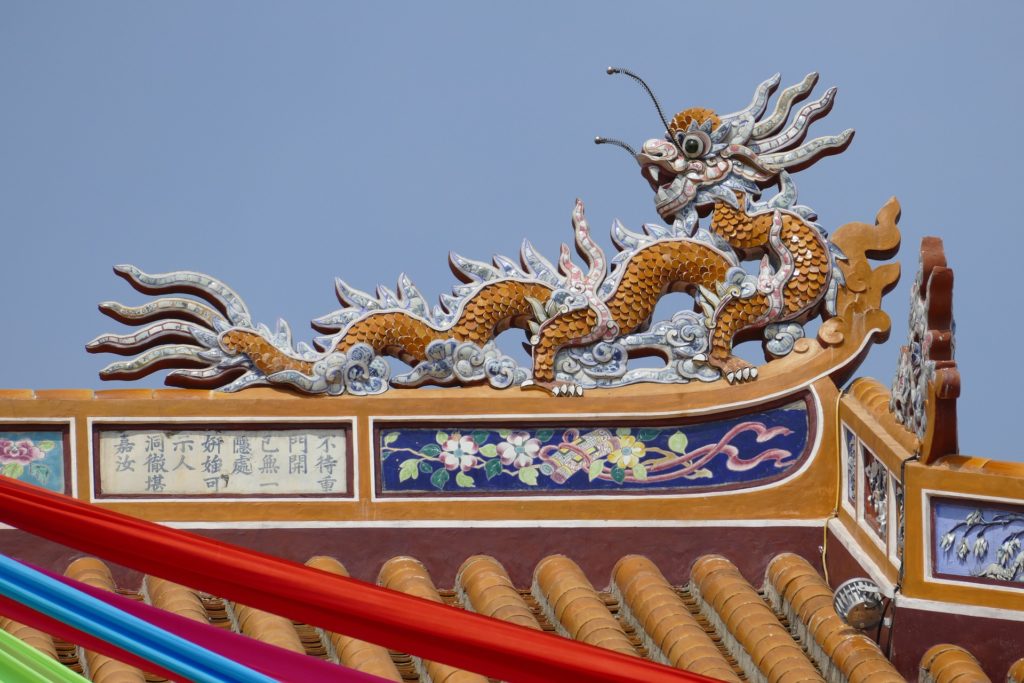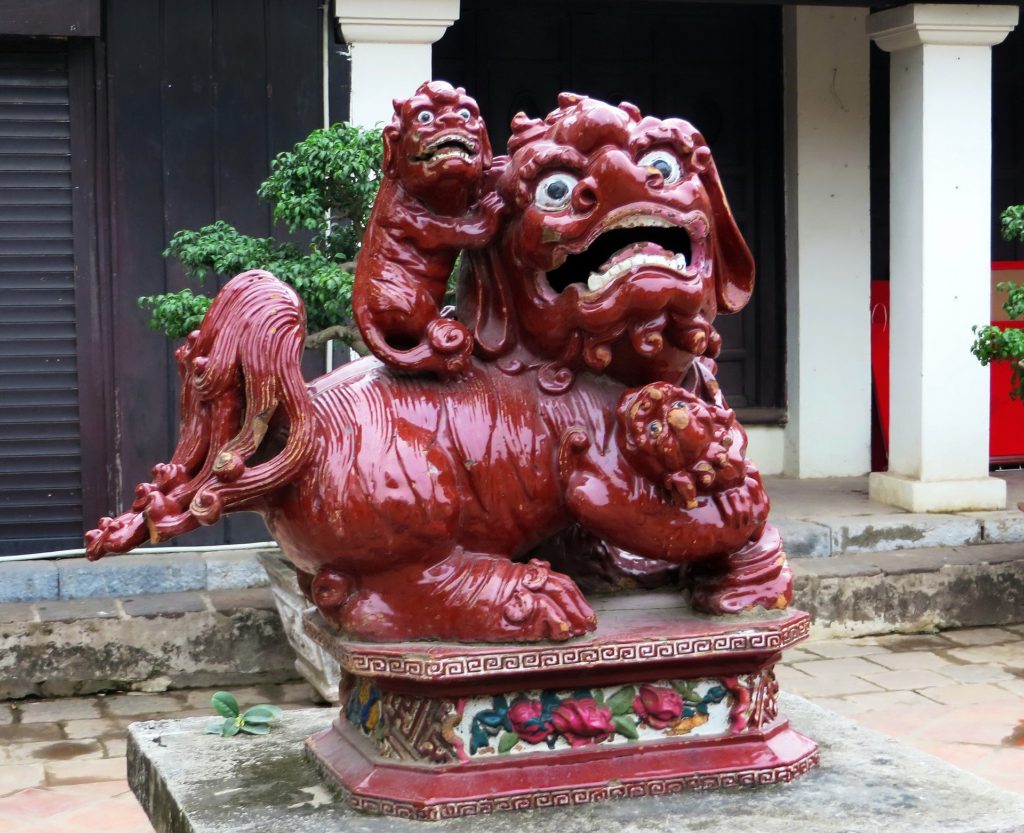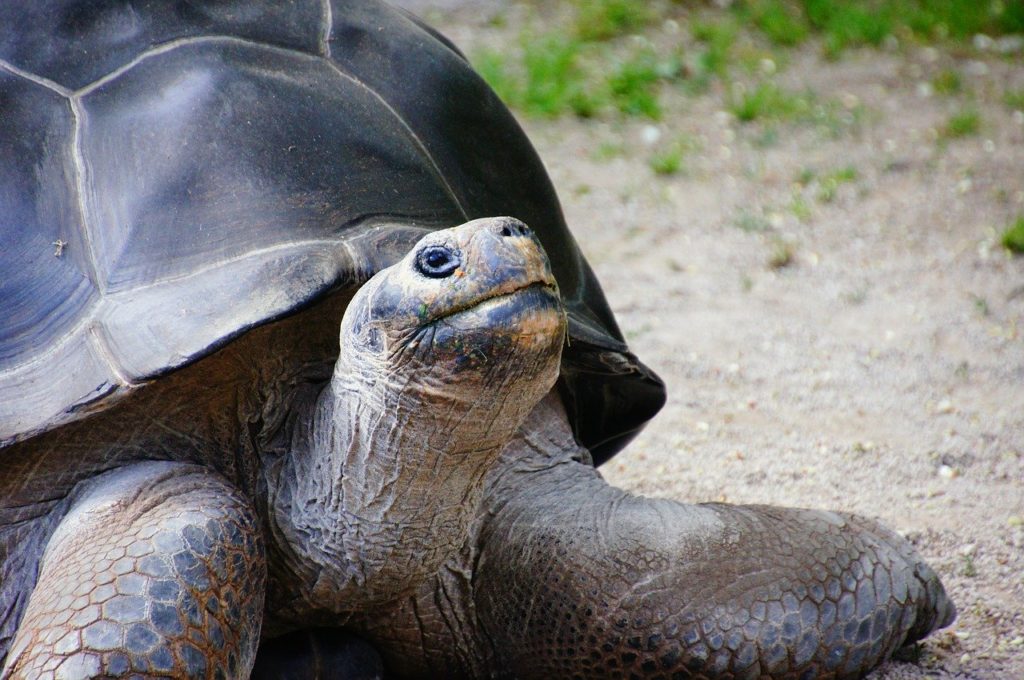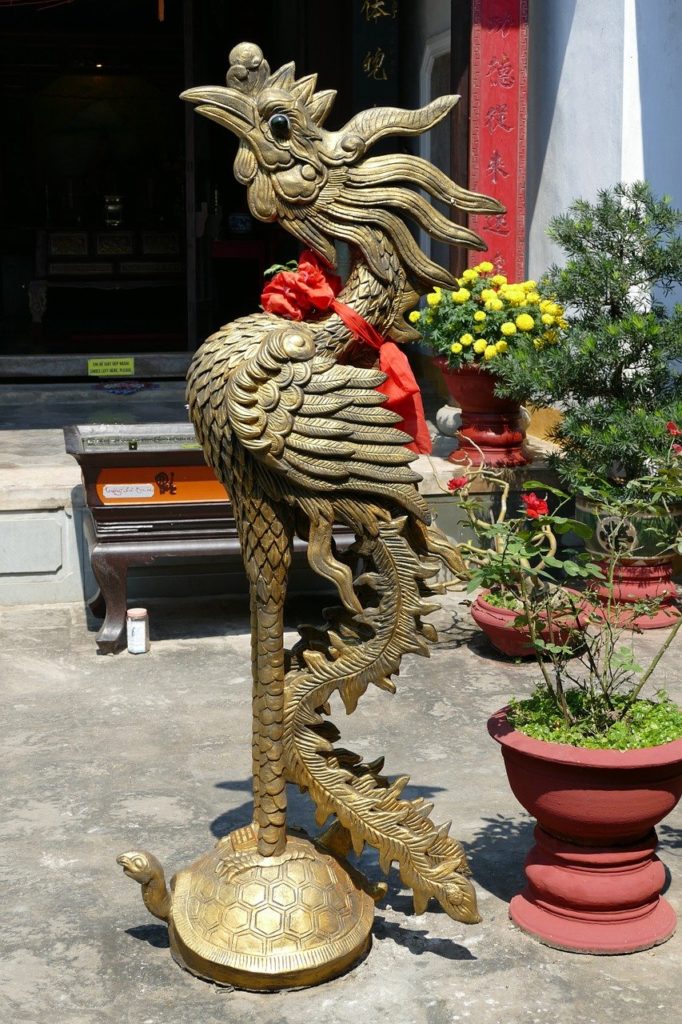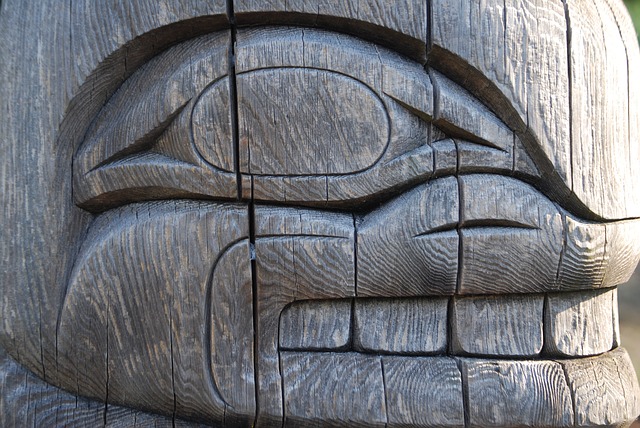Vietnamese Sacred Animals Posted by Kandle Dart on May 3, 2021 in Culture, Vocabulary
Similar to other neighboring countries, especially China, animism and the belief in sacred, mythical animals has permeated deeply into the Vietnamese culture throughout its history. Even to the present day, one can find images of dragons, Chinese unicorns, turtles, and phoenixes in Vietnamese architecture, home interior design, fashion, sculpture, painting, literature, and more.
THE FOUR SACRED ANIMAL SET
The most four popular sacred animals in the Vietnamese culture, often referred in a set called bộ tứ linh (four sacred animal set) are:
- Long (dragon)
- Ly/Lân (Qilin or Chinese unicorn)
- Quy (turtle)
- Phụng (phoenix)
- LONG/RỒNG: Long (Sino-Vietnamese word) or rồng (pure Vietnamese word), is a mythical animal, a product of imagination, combining body parts of various animals such as snake (body), lizard (thighs), hawk (claws), and fish (scale). According to ancient myth, the Vietnamese people are the descendants of the dragon and a fairy. They refer to themselves as con rồng cháu tiên (children of a dragon, grandchildren of a fairy). The dragon represents the king, prosperity and power. In old times, the official outfit of the king always had the image of a dragon, called long bào (the dragon dress). As a son of God, only the king had the privilege of wearing long bào.
- LY/LÂN: Lân or kỳ lân also is a mythical animal, a product of imagination, with a head of the dragon and body of other animals. Similar to the dragon, the Chinese unicorn is a symbol of peace, wealth, and fortune. Kỳ lân is believed to have the power to guard the home, so a pair of kỳ lân’s statues are commonly found in front of the entry way to temples and large homes.
- QUY/RÙA: Quy (Sino-Vietnamese word) or rùa (pure Vietnamese word) is the only actual animal in bộ tứ linh. A turtle has a long life and can survive without food for a long time. In Vietnamese belief, rùa is a symbol of longevity, strength, and wisdom. If you have a chance to visit Hà Nội, the capital of Vietnam, stop by Đền Văn Miếu Quốc Tử Giám (Temple of Literature), which was built in the 12th century, during the Lý Dynasty. There you will find eighty-two stone stele sculptures each with a base shaped like a turtle. Carved on the steles are the names and details of the doctoral graduates during the Lê and Mạc Dynasties (1442-1779). These steles were inscribed on UNESCO’s Memory of the World Register in 2011.
- PHỤNG/PHƯỢNG: Phụng/Phượng/Phượng hoàng is a mythical bird which has the neck of a snake, fish scales, eagle claws, and a peacock tail. This bird is a symbol of peace, virtue, nobility, and grace. While the dragon is a yang element and represents the king, the phoenix is a yin element and represents the queen. The complementation of yin and yang in the pair of dragon-phoenix, represents happiness in marriage. Therefore, you often see the depiction of this pair in the decoration of a traditional Vietnamese wedding. The traditional wedding dress of the bride is often embroidered or painted with an image of the phoenix.
THE WHALE WORSHIP
Unlike the popular four ancient mythical animals as mentioned above, cá Ông, also known as cá voi, cá heo, cá nhà táng (a whale, or any type of really big fish) is the particular sacred animal for the fishermen and people who live along the coast. In these fishing villages, people thờ Cá Ông (worship the whale) believing Cá Ông keeps them safe from the storms at sea, and brings lots of fish to their nets. This whale worship became popular during the Nguyễn Dynasty (1802-1945) and continues to the present day.

Build vocabulary, practice pronunciation, and more with Transparent Language Online. Available anytime, anywhere, on any device.



